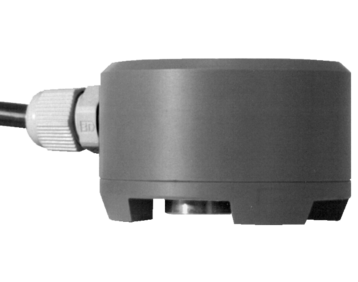Description
with general approval for constructions and EC-Type-Examination Certificate for Ex-zone 1(Cat. 2)
Données techniques
Propriétés
- Classe de protection EN60529
- IP 68
- Température de fonctionnement
- atmosphärisch
- Pression de fonctionnement
- atmosphärisch
- Valeur de résistance de la ligne de contrôle
- 22 kΩ / 100 kΩ
- Longueur de câble
- auf Wunsch
Matériau
- Câble
- TPK (PVC Basis)
- Tiges du capteur
- Edelstahl (1.4571) | Hastelloy B | Hastelloy C | Titan | Tantal | Glaskohlenstoff
Options
- matériau du câble
- FEP (Teflon) | EX (PVC blau)
EP configuration
E - [ 1 ] - [ 2 ] - [ 3 ] - [ 4 ] - [ 5 ] - [ 6 ]
Autres informations sur les produits
The EP plate electrodes are approved by the DIBt (German Institute for Structural Engineering) for monitoring collecting basins, collecting devices, control and filling shafts.
The detector body of the EP is made of the materials PE, PPH, PVC, PTFE or PVDF, depending on requirements. The electrode tips are made of stainless steel, 1.4571, Hastelloy B, Hastelloy C, titanium, tantalum or glasscarbon. Through this the EP is suitable for use with highly aggressive media. The electrode relays ER-107…, ER-217… or ER-145… (intrinsically safe control circuit) supply a measuring voltage which allows an operating current to flow via the resistance built in the conductive electrode through the signal line. If the conductive medium rises to the height of the electrode tip of the level sensor, a circuit is closed. This causes a change-over of the voltage-free output contacts on the electrode relay. In order to take into account different condu- ctivities of the liquids, the electrode relays ER-107…, ER-217… or ER-145… can be supplied in two different response ranges (1…30 k / 6…90 k). Within these ranges the responding value can be adjusted by means of a potentiometer. If a cable interruption occurs the output contacts are changed over (as for an alarm caused through reaching the‚ response height or a voltage breakdown). If a cable short-circuit occurs this corresponds to an “alarm signal” (as when the response height is reached). The electrode relay works according to the closed-circuit principle, i.e. in case of a power failure the output contacts switch as when reaching the response height.
Documents et téléchargements
Fiche technique
Instructions de configuration
Instructions de montage et d'installation
Certificat de contrôle
déclaration de conformité
produits de cette série
1 variantes sont affichées
Accessoires

OAA-300
Voir le produit

















